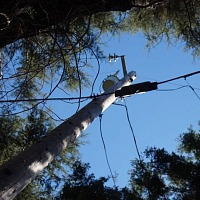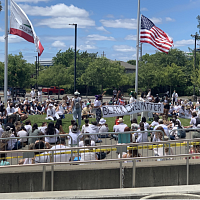 At the Sonoma County Library, the shift from physical books and resources to digital ones has been slow but steady over the past few years.
At the Sonoma County Library, the shift from physical books and resources to digital ones has been slow but steady over the past few years.
“Every year, we see more and more patrons checking out electronic books, streaming movies, tracing their family tree or conducting research,” Library Director Ann Hammond said in a press release. “Some of our most loyal and active patrons rarely come into a branch.”
But since closing all of its branches due to the coronavirus pandemic and county shelter-in-place orders on March 14, the library reports a dramatic spike in its digital circulation numbers.
OverDrive, a popular way to check out electronic books and audiobooks through the library, had a 356 percent increase in use from March 17 to April 8. In the same period, the library’s Hoopla platform, which offers books, films, TV, music, comics and more, had a 786 percent increase.
Kanopy, a resource for classic films and documentaries, had a 298 percent increase, and RBDigital, which connects readers with thousands of current issues and back issues of magazines, saw the largest jump with a 2,434 percent increase in use.
The library says patrons are discovering all of the digital resources available to them for free with a library card — enabling them to do things like learn languages with Mango, brush up on software skills with Lynda, decide what home appliance to purchase with Consumer Reports, research car repairs with Chilton, look up ancestors on Ancestry.com, or read the New York Times.
And Hammond doesn’t think the shift to digital will be temporary.
“There is no substitute for a one-on-one conversation with a friendly librarian, or attending a library event, or bringing your child to a story time, but a lot of our patrons are discovering how easy it is to try the digital option, and we’ll be prepared to keep supporting them,” she said. “We’ve already added or expanded digital resources, and we will keep looking for ways to serve our community, in person or online.”
One enduring concern, however, is that not everyone has access to the Internet.
“We have free high speed WiFi in our branches, and it’s still on during the closures so people can access it from outside when the building structure permits,” Hammond said. “We also have more than 500 WiFi hotspots and more than 100 Chromebooks in circulation, but it’s not nearly enough.”
Hammond says when branches eventually reopen, the library will continue to advocate on behalf of those who can’t afford broadband.
“This is a wake-up call for every library in America,” she said. “We can’t close the digital divide by ourselves, but we intend to be loud and persistent voices in finding a solution.”

 Live Radio
Live Radio
































